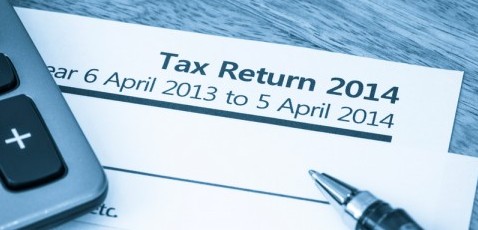If you are not a traditional ’employee’ – i.e. you are a company director, self employed, or have additional earnings which have not been taxed though you employment, you will need to complete a self assessment tax return.

Do you need to complete a tax return?
Alongside the self employed and company directors, you will need to register for self assessment if you receive more than a certain amount of income from a variety of sources, such as savings and investments or property, or if you earn over £100,000 even from ‘normal’ employment. Essentially, if you earn income which cannot be taxed at ‘source’, you are likely to need to fill in a tax return.
Child Benefit changes
Importantly, from the 2012/13 tax year onwards, if you or your partner earned £50,000 or more, any Child Benefit you received from 7th January 2013 onwards must be returned via the self assessment system. This change means that thousands of people now (since January 2014) have to complete tax returns simply to administer the Child Benefit tax charge.
How do you get a tax return?
If you are required to fill in a self assessment form for one of the reasons listed above, you will need to register with HMRC (see link at the bottom). Once you register, you will provided with a Unique Taxpayer Reference (UTR) which you will need when you file your return.
The deadline for registering is by the 5th October after the end of the tax year in which you have untaxed earnings to declare
Self Assessment Key Dates
For the dwindling number of people completing paper returns, the deadline each year for sending it to HMRC is 31st October.
For online submissions, the deadline is 31st January each year. This is also the date by which you must pay any tax you owe.
A tougher penalties regime was introduced last year (2012), starting with an initial £100 if you are as little as one day late in submitting your return. The penalties (and interest) increase over time.
Even if you have no tax owing, if you are registered to complete a self assessment return, you do still have to complete one to avoid a penalty.
Filing your Tax Return
Most people file their self assessment returns online.
Importantly, you must register to use HMRC Online Services before you can complete your return online. An activation code will be sent to your home address, so allow at least 7 days to receive the code.
You will also need your Unique Taxpayer Reference (UTR) and post code.
Once you are registered to use the system, you will need all your tax records, dividend vouchers, receipts, and other information in order to complete the online form. You can save your progress at any time and return to complete the form at a later date.
If you have authorised your agent (accountant) to take care of your personal tax affairs on your behalf, then you should provide all relevant information to them.
Paying your tax liabilities
The deadline for paying any unpaid tax for the previous tax year is the 31st January.
If you have to make any ‘payments on account‘ (the expectation being that in the current tax year, you will earn the same as previous tax year), the first payment is also due on 31st January, the second on 31st July.
If you believe that your income for the current tax year will be lower than the previous year, you can ask HMRC if your payments on account can be reduced accordingly.
Further Information
For everything from registering for self assessment, to online services, and penalties, read HMRC’s complete guide to self assessment.



Follow Company Bug